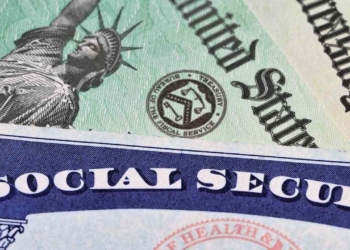If you’re 65 or older, or you have parents or grandparents in that group, you’ve probably heard the news: starting with the 2025 tax year, there’s a new $6,000 standard deduction just for seniors. It’s not a flashy headline, but for millions of people living on fixed incomes, it’s real money.
It’s actually money that stays in their pockets instead of going to the IRS. I first learned about it while helping my mother-in-law sort through her paperwork last month. She’s 72, lives alone, and every dollar counts. When I showed her the numbers, her eyes widened. “$6,000?” she asked. That’s more than my car payment used to be.
New tax reductions for seniors: All you need to know to use it
Here’s how it works. The standard deduction — the amount you can subtract from your income before taxes are calculated — already goes up a bit when you turn 65. For 2025, that extra bump was about $1,550 for a single person. Now, on top of that, you get another flat $6,000 if you’re 65 by the end of the year.
So a single senior’s total standard deduction jumps from around $16,550 to $22,550. For a married couple both over 65, it’s $12,000 extra — pushing their deduction well above $42,000. You don’t have to itemize, fill out extra forms, or prove anything beyond your age. It just shows up on your return.
Who qualifies? Anyone born in 1960 or earlier
No income test at the low end, though the benefit starts to phase out if your adjusted gross income tops $100,000 single or $200,000 joint. By $150,000 or $250,000, it’s gone completely. That keeps the help aimed at middle and working class retirees, not the country club set.
Social Security, pensions, 401(k) withdrawals all count as income, but most seniors fall well below those cutoffs. The savings depend on your tax bracket. Someone in the 12 percent bracket saves $720. In the 22 percent bracket, it’s $1,320. Add in state taxes, and the total can climb higher.
A tax benefit to support millions elder of Americans
In states like California or New York that follow federal rules, the break flows through automatically. In no income tax states like Florida or Texas, you still get the full federal benefit. Either way, it’s cash most retirees weren’t counting on. The idea came out of the latest round of tax fights in Congress. Lawmakers extended parts of the 2017 tax cuts and slipped this in as a compromise.
Republicans wanted broader relief; Democrats pushed for protections for lower earners. The phaseouts were the deal sealer. The cost? Roughly $200 billion over four years, according to the Joint Committee on Taxation. Critics call it another budget buster.
Supporters say it’s overdue help for a group that’s watched costs for medicine, housing, and groceries outrun their Social Security raises for years. Come tax time next year, the change will be simple. The IRS added a new line to Form 1040. Most tax software will handle it without a hiccup. If you prepare your own return, just check the box for age 65 or older and let the math do the rest.
Before applying: one last thing
One warning: make sure your birthdate is correct on file. A mismatch can delay your refund. Is it perfect? No. It ends in 2028 unless Congress acts again.
It doesn’t touch Medicare premiums or long term care costs, the real budget breakers for many. But for now, it’s a straightforward win. My mother-in-law plans to use her savings for a new hearing aid and maybe a weekend trip with her sister. Small things, but things she’d been putting off. If you’re in this age group, mark it on your calendar. If you help someone who is, walk them through it.





